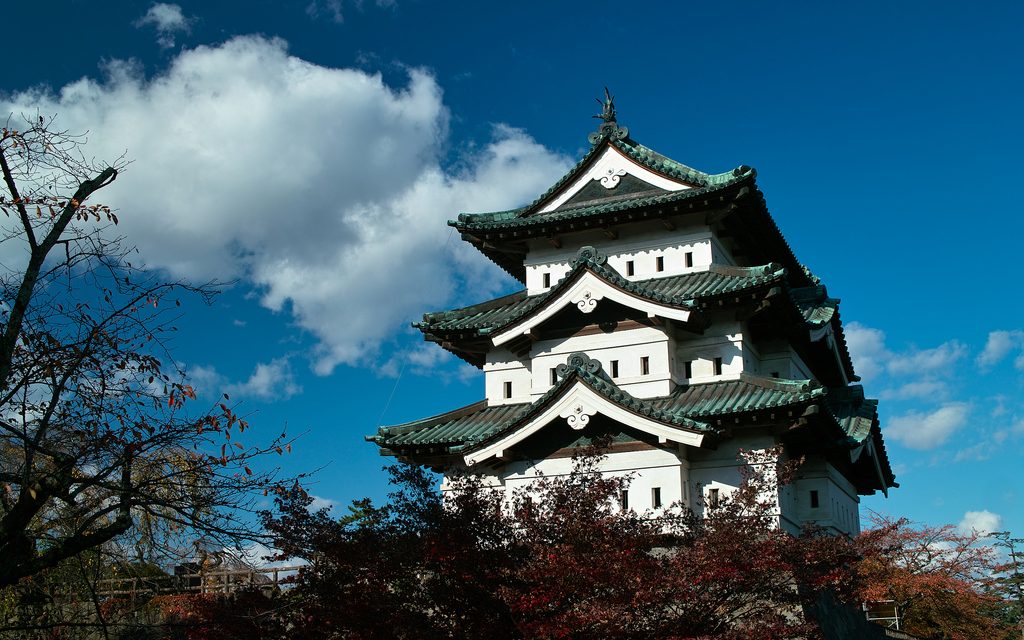Aomori is a vastly under-rated destination, but a visit to Hirosaki and the Tsugaru region can be every bit as enjoyable as the more famous tourist destinations like Kyoto and Tokyo.
Hirosaki is an old castle town and has many well-preserved buildings, a gorgeous castle, a very friendly youth hostel, and provides access to hot spring resorts and hiking in some of the most beautiful and traditional areas of Japan. For more information about the beautiful Dewa Sanzen region and Aomori hotspring resorts, see the temple lodging and hot spring resorts section of this page.
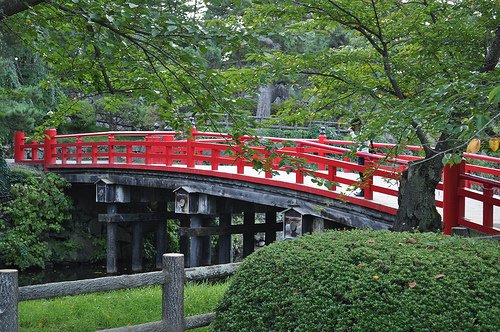
Photo credit: katsniffen
Hirosaki Castle
This beautiful castle dating from the early part of the nineteenth century, is one of the very few castles that are not concrete reconstructions. Your guide book will tell you that the best time to see it is when the cherry blossoms are in bloom, but you may be disappointed by the crowds. The castle is also very beautiful in winter, but you can’t go inside then. The castle is located in a beautiful park and is near the famous Choso-ji temple, the slightly disappointing Samurai quarter, and the interesting Neputa-mura museum.
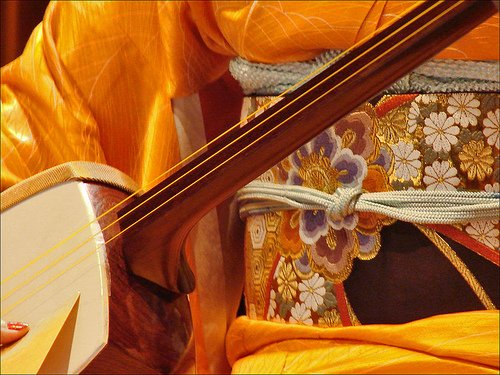
Photo credit: dalbera
Yamauta Live House
The ultimate in Quirky Entertainment! The Shamisen is a traditional Japanese instrument that looks something like a banjo but this isn’t the sort of music you hear at shamisen concerts in Kyoto. It’s a sort of Japanese Bluegrass, fairly indescribable, a sort of oriental plunckety sound, accompanied by wailing but a lot of fun. The atmosphere is really friendly, the food is great, and it’s always interesting to see your waiter or waitress on the stage playing after he or she has finished serving you. Expect to pay between two and three thousand yen per person (could be a bit more by now though). The music starts around 8pm. When you exit Hirosaki station, you’ll see a big bus rotary in front of you. Take the road on the left, and walk for about three minutes. The Yamauta live house is on the left side.
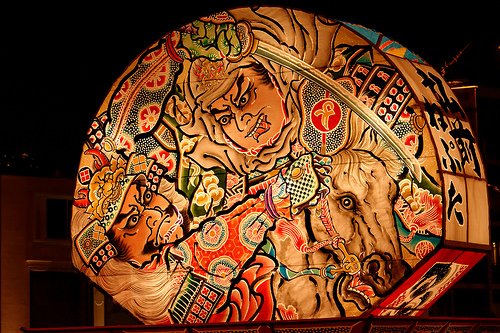 Photo credit: jdnx
Photo credit: jdnx
Neputa Festival
This exciting event is held from August first to seventh every year. It is similar to the more famous Nebuta festival in Aomori city and features about twenty Neputa (large gaily coloured floats) being taken around the town accompanied by thousands of dancers. The festival is said to have originated in the eight century when a local military leader used similar floats to frighten the local natives (Ainu) during a battle. Most scholars however, agree that it originated in the 1500’s when the lord of the Tsugaru district entered a float in Kyoto’s Obon festival and that it proved so popular that the floats became a tradition in Aomori prefecture.
There is an excellent museum, called the Neputa-no-Yakata Museum, where you can see some of the Neputa, a Taiko drumming demonstration, local crafts, Japanese kites, and Japanese toys. The museum is located across from the Kamenoko Gate at the North-east corner of Hirosaki Koen (park).
A great book to read while you are travelling in Aomori is “Looking For the Lost” by Alan Booth. He walked all over the area, retracing the journey of a famous writer named Dazai Osamu, who wrote a book called Tsugaru, which is also an excellent read. Looking For the Lost is full of interesting observations about Japanese history and culture, and Alan Booth’s writing is beautiful.
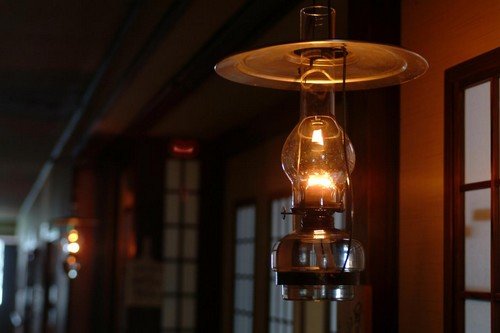
Photo credit: booking.com
Aoni Onsen (Lamp no Yado)
I’ve never been there, but I’ve been wanting to go for years. This hot spring resort is famous for being one of the most traditional in Japan. These wonderfully stubborn people refuse to use electricity for lighting, and instead illuminate the inn with oil lamps! The outdoor bath is said to be beautiful, and in winter, if the roads are closed they pick you up in a snowmobile! The ryokan’s phone number is (0172) 54-8588, and it can be booked here.
 The Grave of Jesus Christ
The Grave of Jesus Christ
Aomori’s quirkiest tourist attraction has to be the grave of Jesus Christ in Herai. People in the area that Jesus was not crucified (they say it was his brother) and that he escaped the Middle East and came to Japan where he spent the remainder of his life in a remote village. The legend started in 1933 when documents from Ibaraki prefecture were discovered in 1935 that were purported to be Christ’s last will and testament. They were later exposed as fakes, but people in the area believed that they explained several mysterious pyramids and graves in the area. There are two strange graves in the area, where two individuals known as “Juraizuka” and “Judaibo” are buried and there were believed to be the graves of Jesus and his brother.
You can see the graves and the Kirisuto no Sato Denshokan (Museum of Christ) but other than that there is little of interest in the area. The museum is open from April to October but can be visited by special arrangement at other times by calling the Shingo village office. The village, now known as Shingo is accessible by bus from Hachinohe. Change buses at Gonohe. For information on buses and accommodation, contact the Shingo village office at 0178-78-2111.
Cover photo credit: t-mizo

